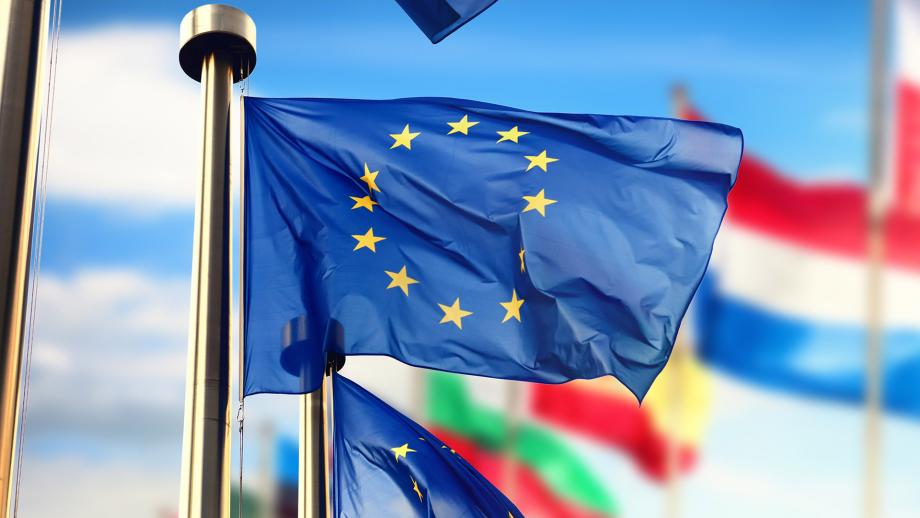Executing the Vision of the European Twin Transformation

By January 2021, the current sanitary situation of Europe remains challenging. The risk of a third pandemic wave of the COVID-19 is becoming visible – in part linked to emerging mutations of the virus that accelerate the risk of contagion among the European population. One promising light at the end of the tunnel has been the discovery of rather effective vaccines leveraging messenger RNA to trigger the immune system to produce antibodies—but now comes the twin challenges of population vaccine acceptance and vaccine supply chain delivery, while keeping citizens comply with ongoing social distancing rules as interim protection. After more than one year, the situation is thus not only health-related. Social distancing and lockdown entail many more issues such as economic challenges and psychological pressures.
The good news is that most countries, the European ones included, have learned from the mistake of imposing extra austerity measures as done after the 2008 financial crisis. Today, Europe is very clear that restoring citizens’ welfare will only happen through a major post-COVID reboot. Specifically, the plan envisions a twin transformation based on the combination of digital transformation and a green revolution.
Those two domains are not new: digitization of our economies has been developing in multiple waves for two decades now, but today it accelerates with more and more powerful technologies such as Artificial Intelligence that will be supporting major productivity gains in the years to come. The green revolution, especially coupled with green technologies may also bring significant benefit while supporting a more resourceful and resilient model for Europe’s future.
But beyond the European statement and the financial envelope, the revolution must be operational. It must be fast, effective, and widespread into European enterprises to benefit from this twin transformation. In the context of multiple research, with Accenture Research, three implementational points must be put in perspective for the success of this twin transformation.
1. Give a chance. Transformation is difficult and challenging; close to 60% of enterprise digital transformation journeys led by European companies in recent years have failed. And transformation does not happen overnight; our research shows that diffusion of new digital technologies such as Artificial Intelligence and Blockchain always starts with a painful phase of disruption (rebalancing prospects for firms and workers), before returns emerge, possibly, at scale only in a few extra years in Europe.
Europe must take actions to support the risk undertaken by enterprises regarding those transformations, besides purely financing the revolution.
Europe should not be shy – Europe should for instance actively support the reboot of failed digital transformation programmes, for instance, based on the fact, that many companies have been successful in their second trial. Likewise, Europe should support the social dimension of the AI transformation to enable smart machines to work with, and not against, humans. In particular, Europe should support on-going education models geared towards human creativity, and other multiple forms of intelligence, complementing AI. Regarding sustainability, a large impact would come from a fundamental rethink of energy policy, but at the same time, we would need to encourage new business models, like transportation as a service model.
2. Get scale. European companies have not waited for the European vision. They have been prioritizing sustainability and digital tech absorption as part of both post-COVID rebound and longer-term advantage. But the key question is whether their plans can scale. In general, our research finds that despite clear priorities, these are yet to translate into new performance trajectories. One reason is that European companies are often much less tuned to agile innovation practices. As an illustrative example, while sustainability could be a great theme to fully reinvent product and service portfolio in line with new expectations of consumers, European companies‘ mainstream strategy in sustainability is more geared towards the reduction of their environmental footprint.
Europe may help create a more powerful sustainability model if it translates part of the sustainability mandate, from environmental, to more new sustainable innovative practices in European value chains and new products/services.
3. Not « either-or », rather « both together ». The idea of a twin transformation is not restricted to the idea that there are two opportunities to develop Europe further. The other critical point is that Europe should embrace both transformations together and leverage their potential synergies. The example above of a transformation as a service model is especially powerful when digital and green technologies create electric self-driving vehicles. Our research indicates that companies that are « twin transformers » have been the most resilient during this COVID-19 crisis, but they are also the ones with better long-term profitable growth trajectory and a fortiori when they exploit the synergies between the two transformational priorities. The good news is that there are as many European companies as American ones embracing the twin transformation journey.
Still, European companies trail in digital transformation and are not as much leveraging the synergies at the intersection of sustainability and technology to accelerate their reinvention. Europe institutions may have a role to discourage a solo approach and ensure synergetic twin transformation.
We conclude by stating that in general, Europe has chosen a powerful vision—the next phase is to steer the right incentives and practice for this vision to be well executed. With an exception of a few sectors, Europe (contrary to the common perception), is not lagging behind North America. More interestingly, the train of the twin transformation has left the station faster in Asia and China, which has allowed their faster post-COVID rebound. What counts here is that China is no longer guided by catching up—it is now guided by a major desire to lead and innovate. Europe’s twin transformation is also inevitably linked to innovating a new socio-economic model. Time to act is now.
Note: While the content of this article is the author’s own opinion, the author is grateful to Mr Francis Hintermann, Executive Director of Accenture Research, and to Accenture Research for allowing him to share some insights from their joint research at Accenture Research.

Founder & Chief Executive Officer at MachaonAdvisory; Venture Partner at Antler; Senior Advisor to Fortino; and Board Member of STOA at the European Parliament